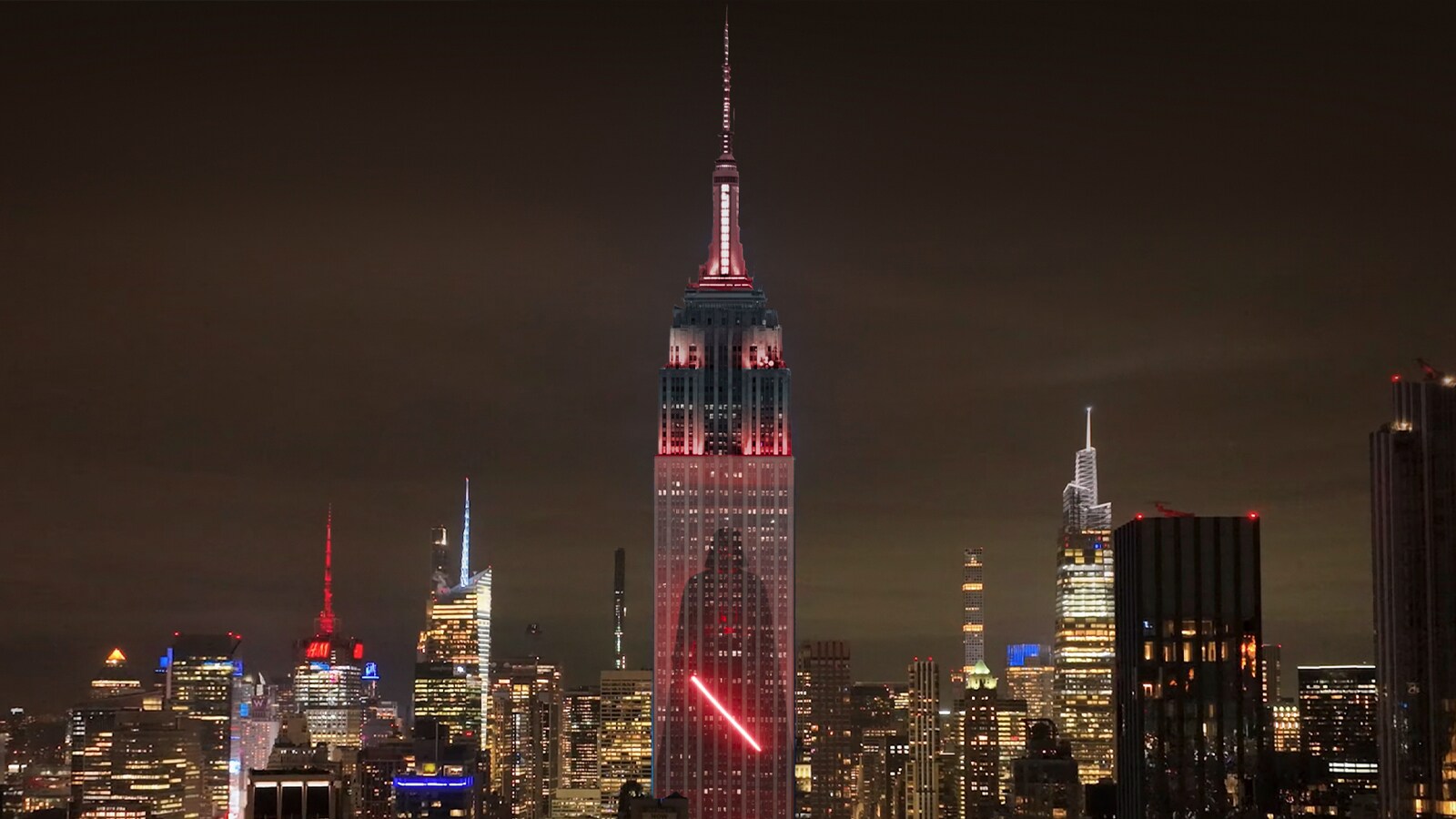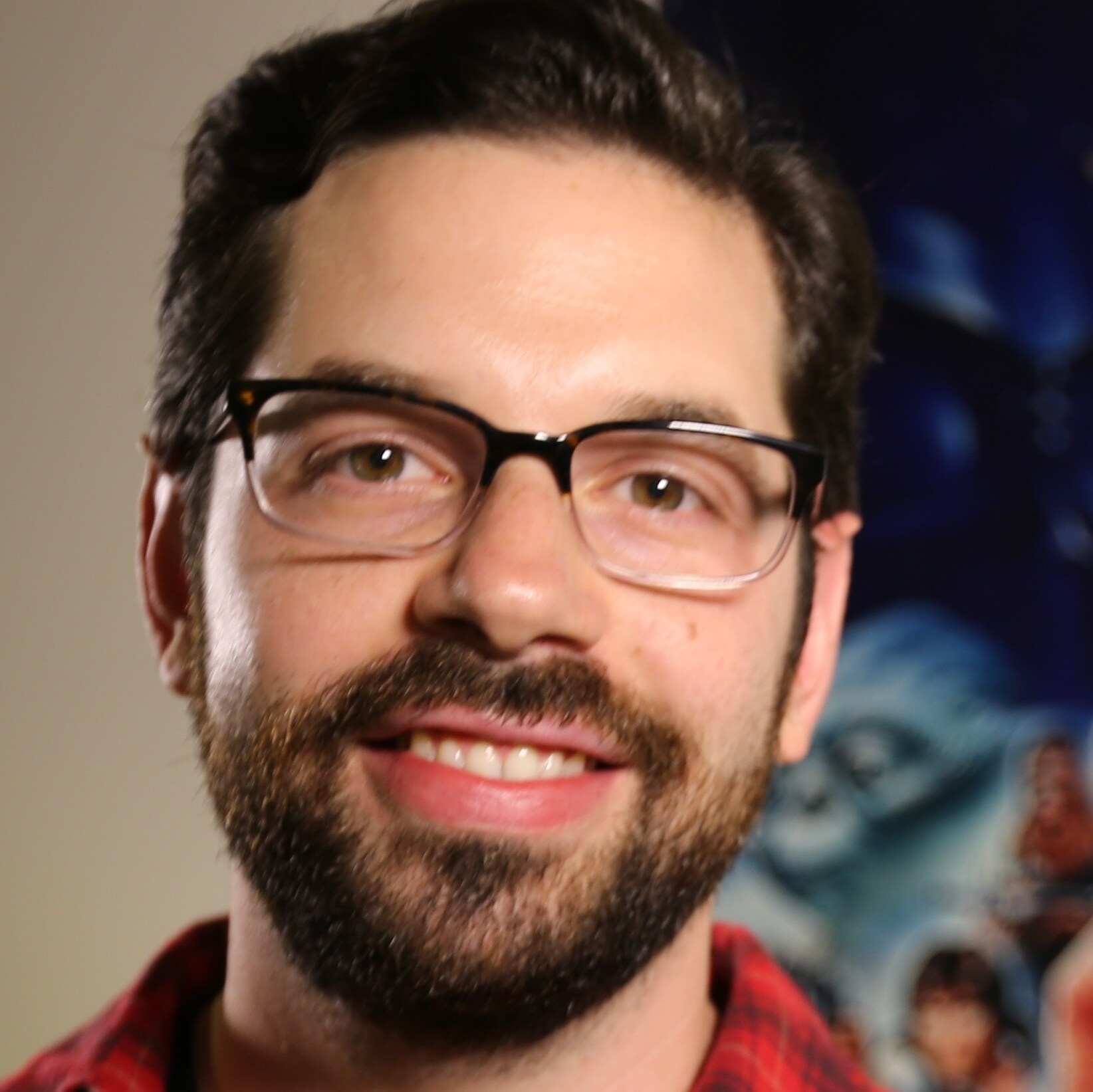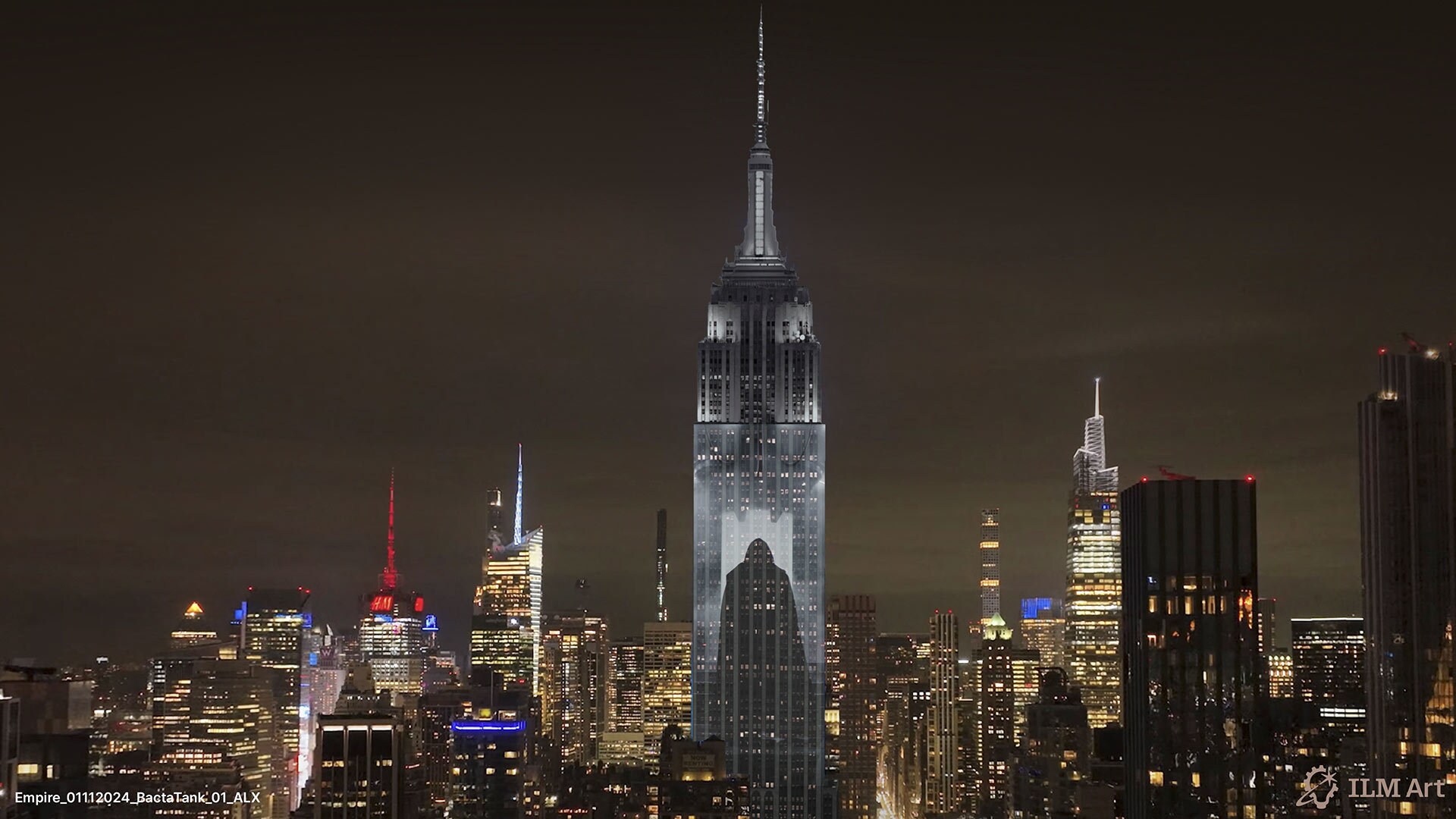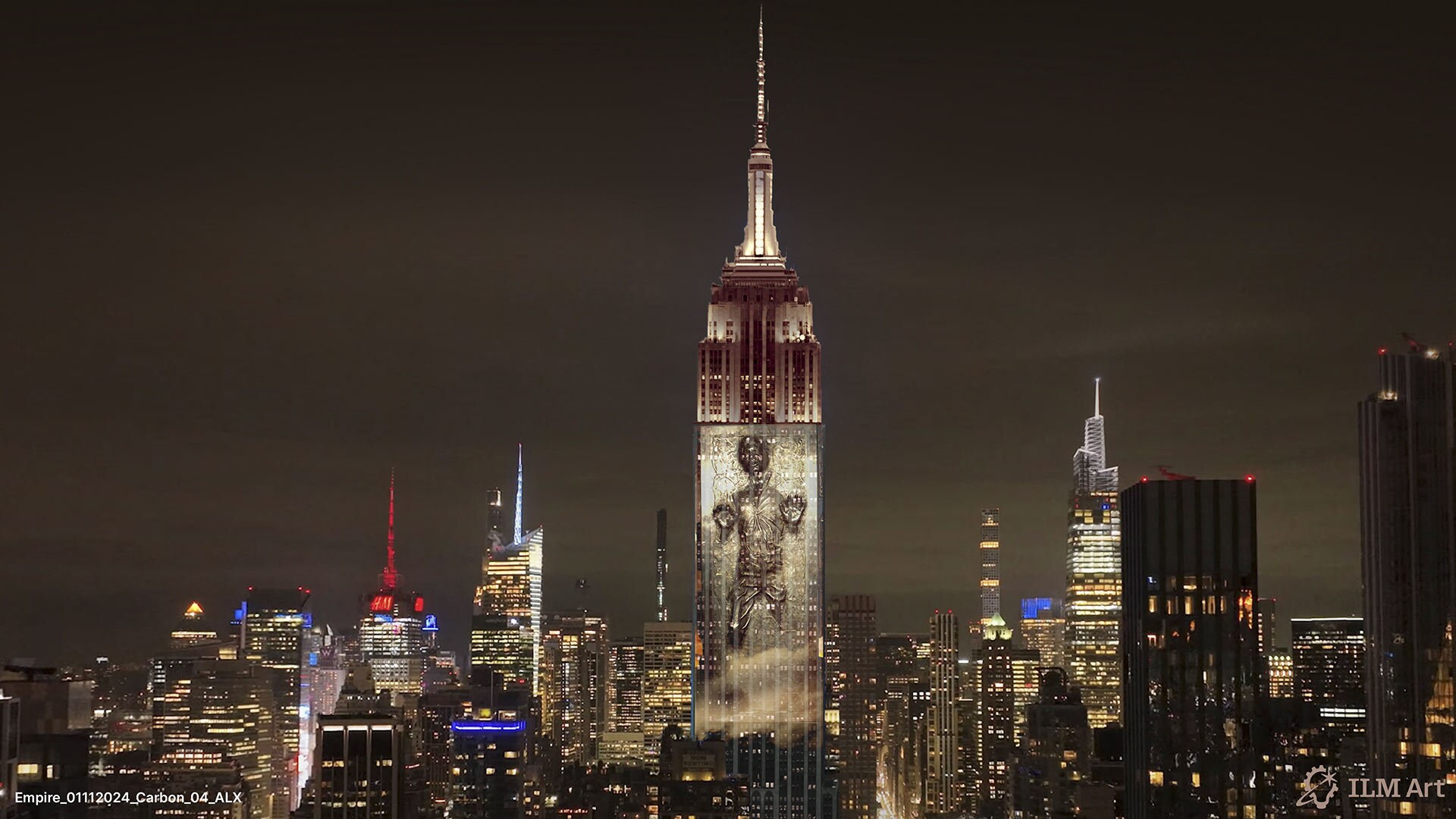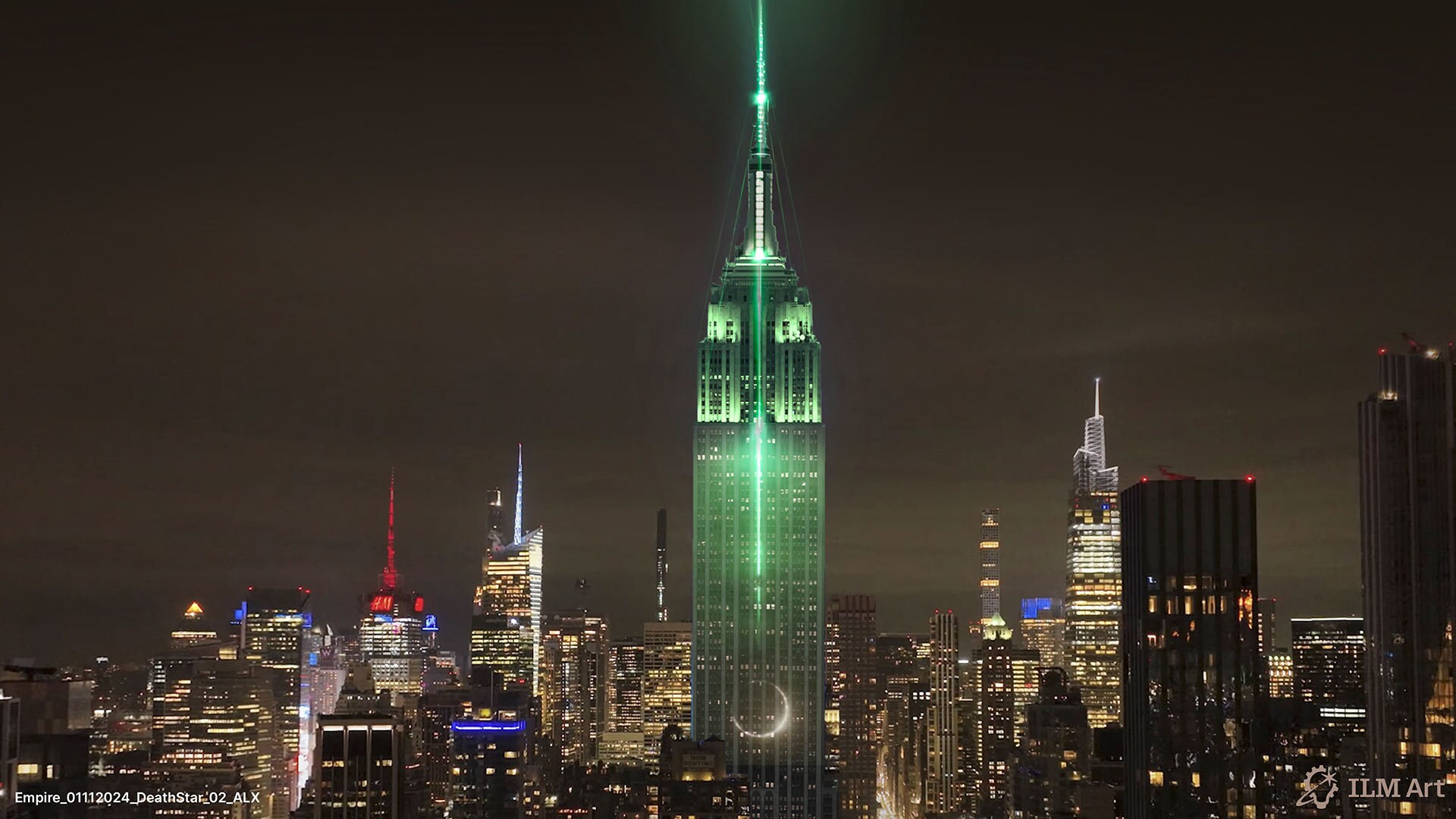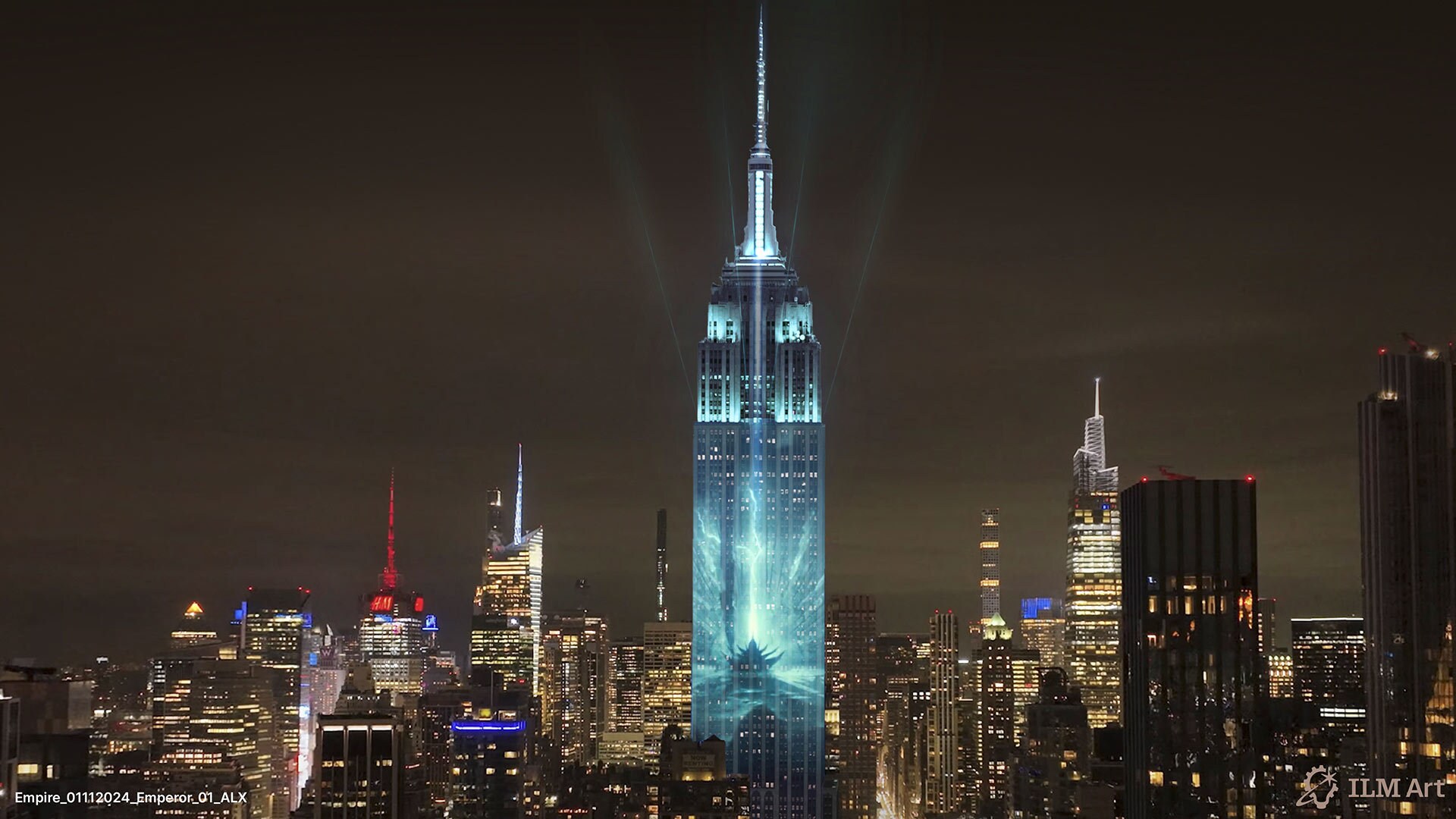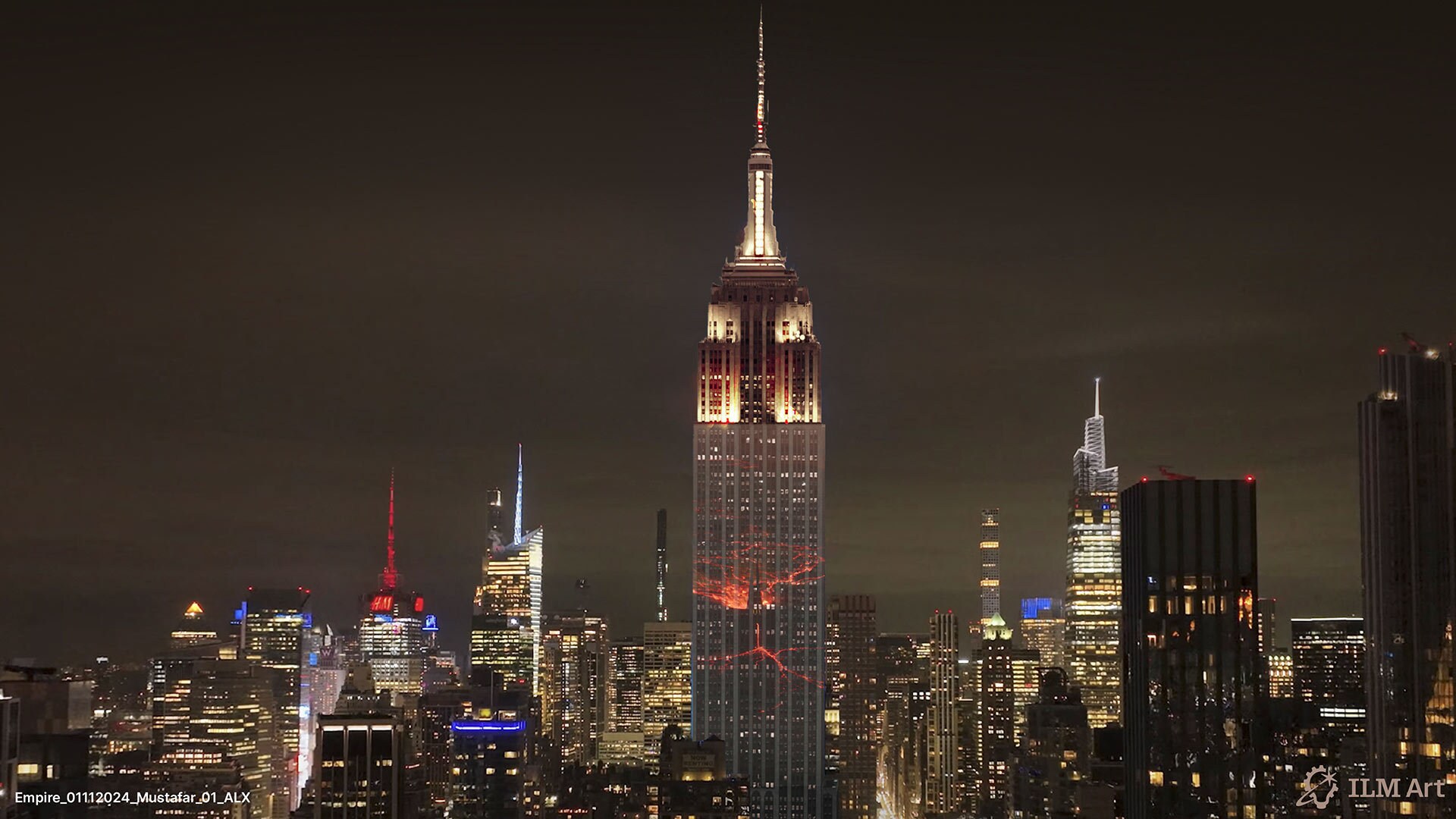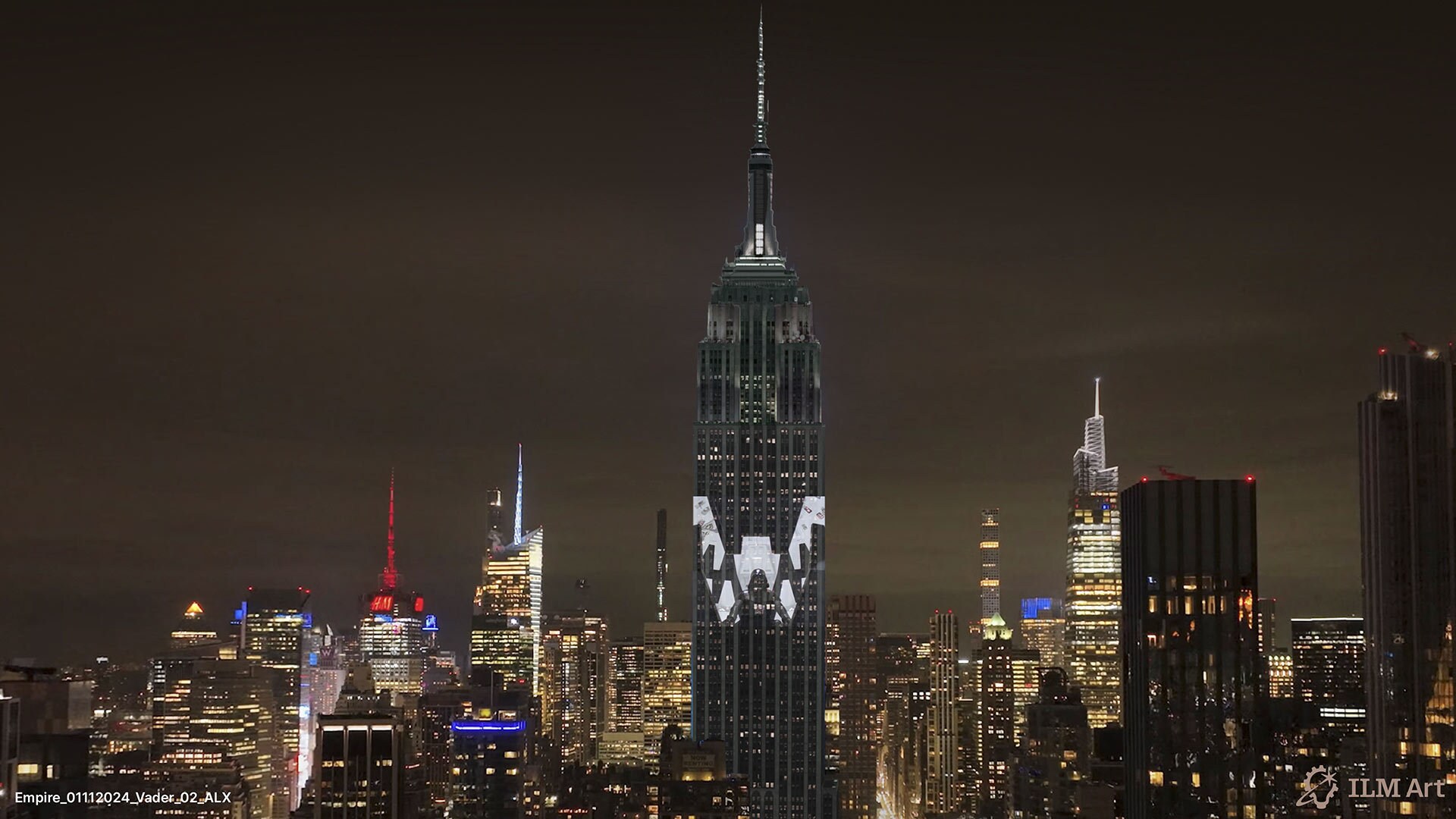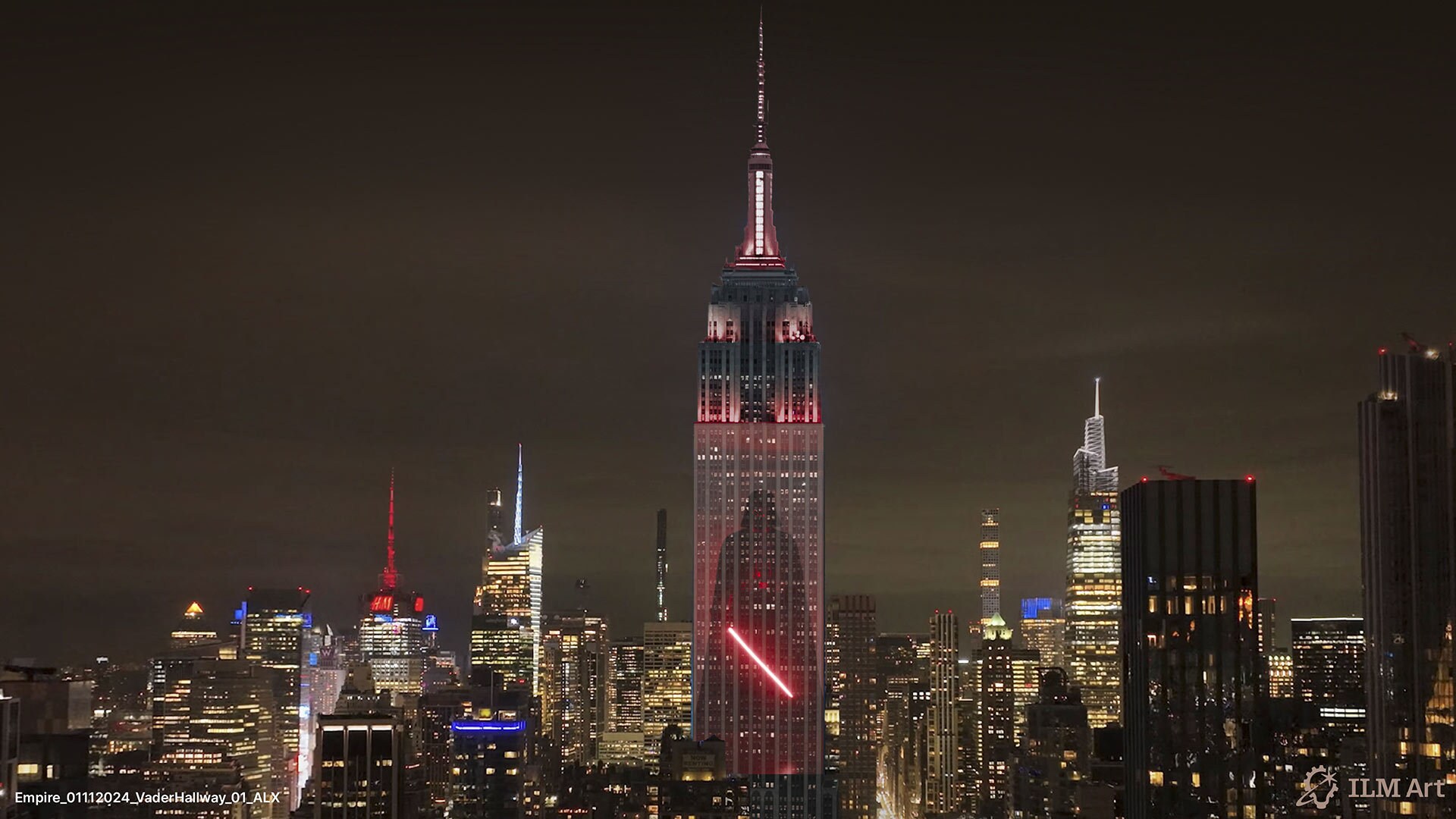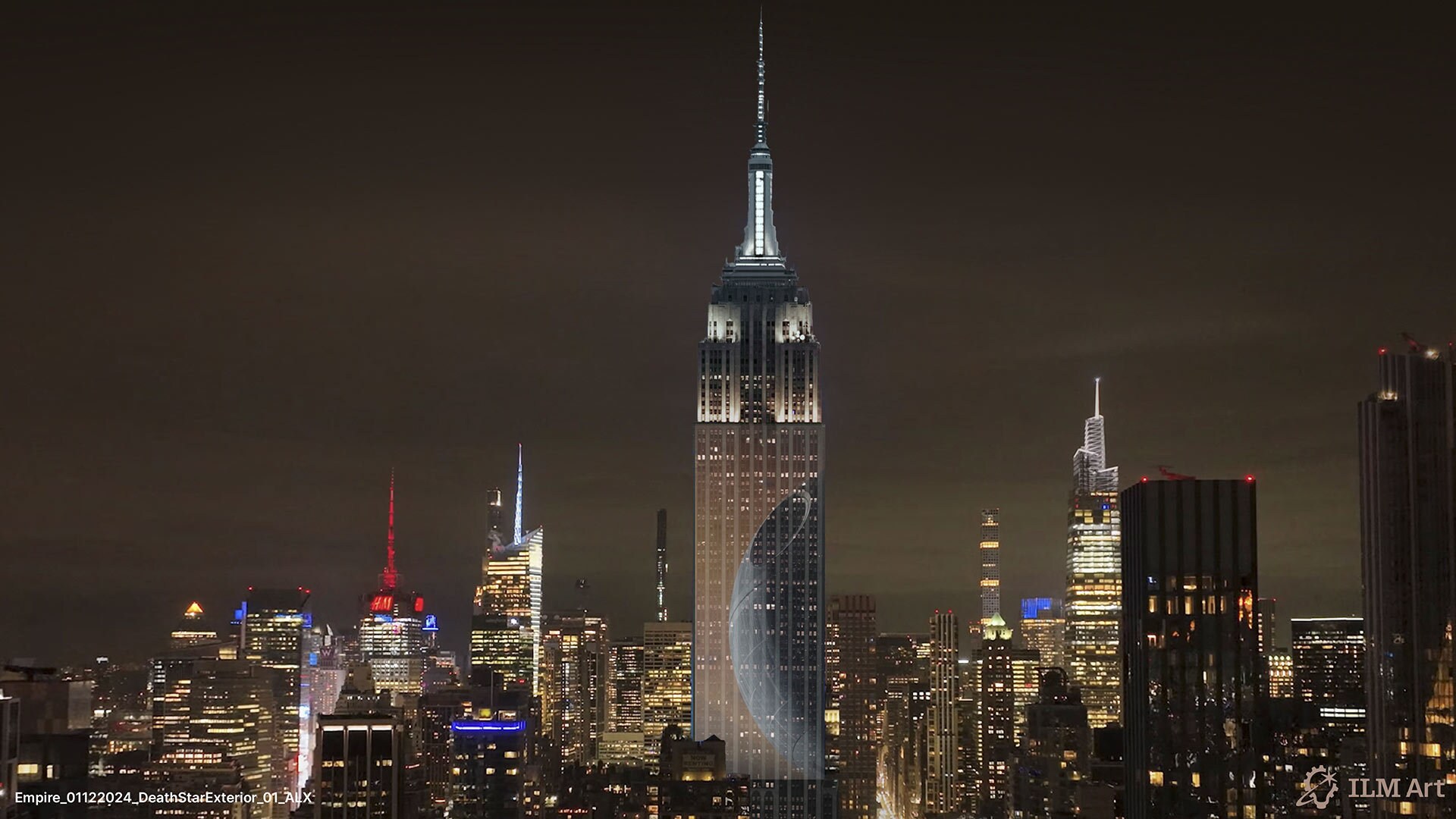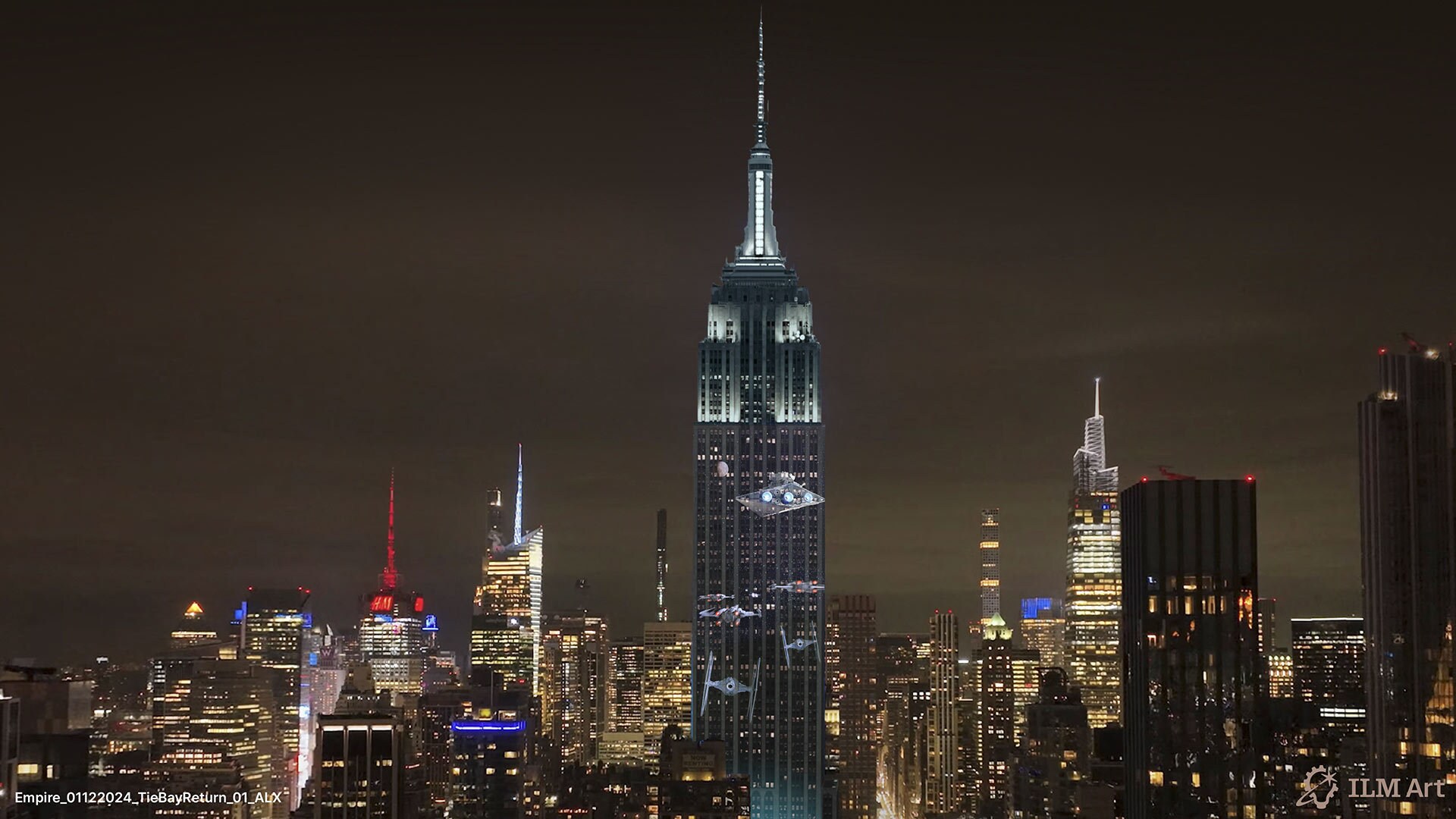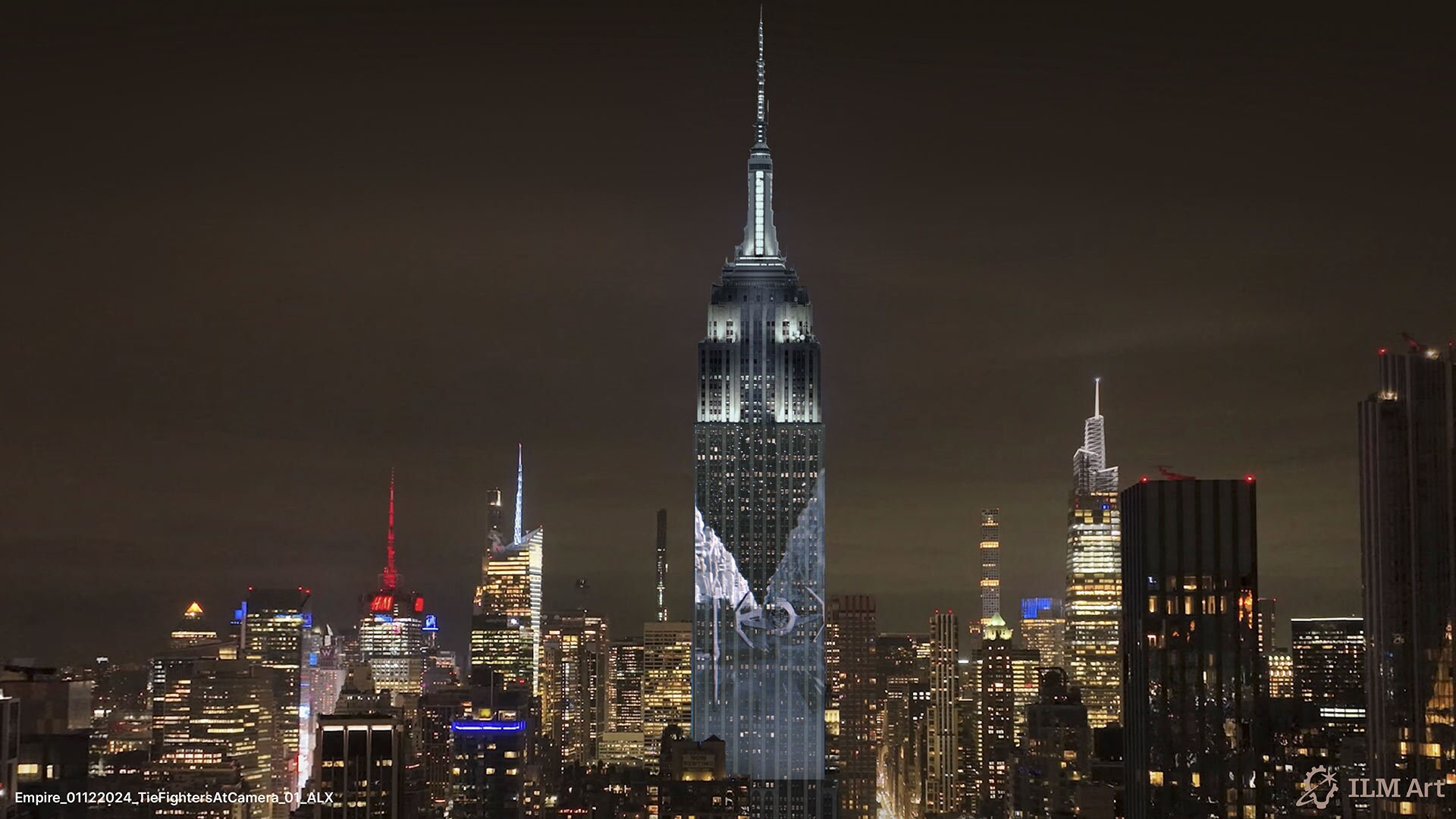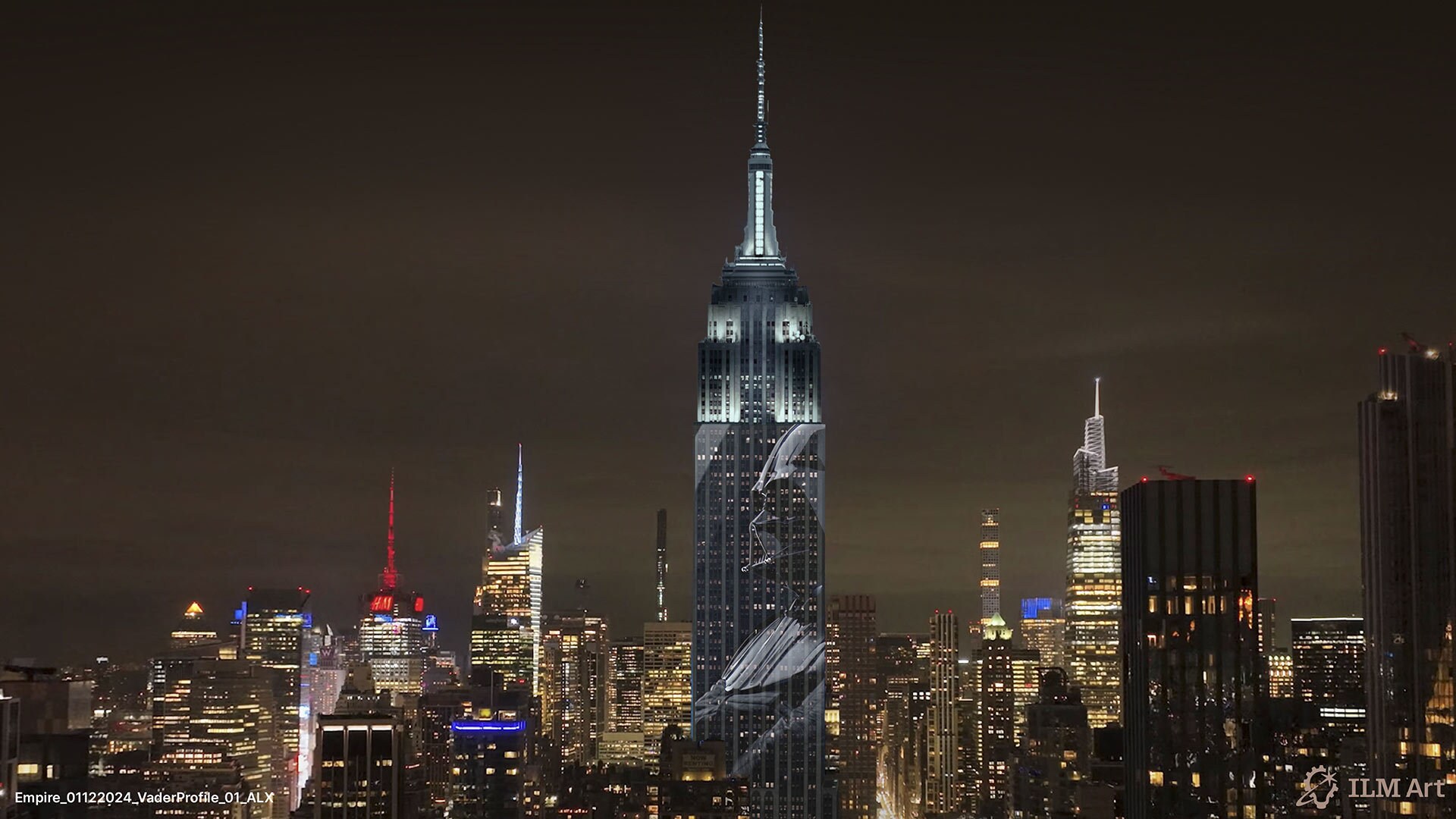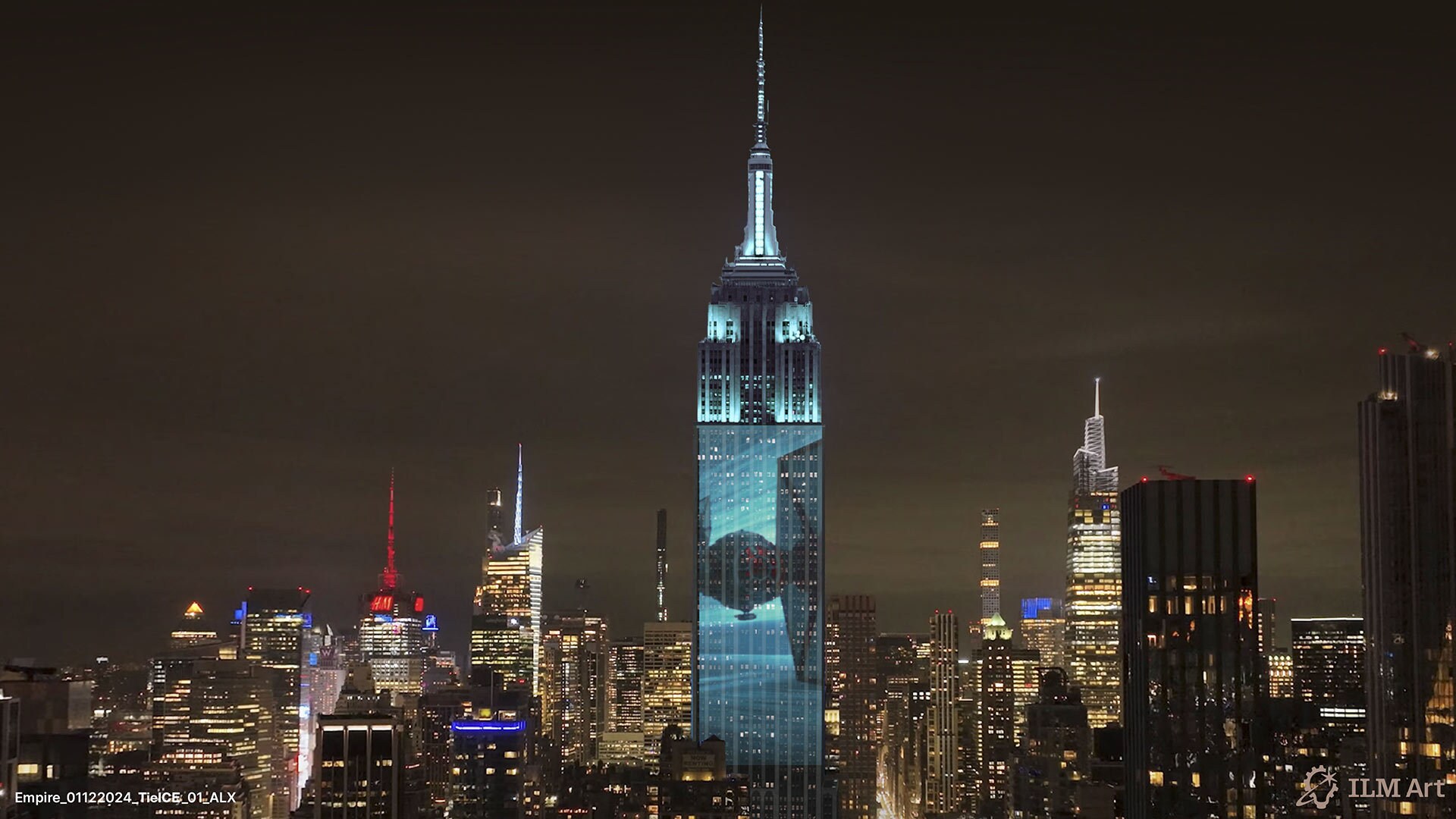With all that happens in New York City, it can be hard to impress residents of the Big Apple. (I should know — I’m a native.) But last night, passersby in Midtown might’ve been surprised by what they saw if they looked up: X-wings, TIE fighters, and more from the Star Wars galaxy, all traveling across the Empire State Building.
As part of Lucasfilm’s month-long “Imperial March” consumer products campaign, and starting the “March to May the 4th,” the iconic New York skyscraper hosted a dynamic light show, which saw classic Star Wars moments and new visual effects featured on the 1930 building’s beautiful Art Deco facade. The 5-minute sequence was created by Industrial Light & Magic, Lucasfilm’s visual effects house; for all of ILM’s legendary work, this was a project like no other.
“The need to think about it differently is that there are many unique things that need to be taken into account to make sure that what gets put on this facade will actually translate correctly and will work correctly, visually and as part of the overall story,” Khatsho Orfali, ILM visual effects supervisor, tells StarWars.com about a week before the event. “What may look good as a composition and a scene that plays out in a movie theater or on a regular TV screen may not necessarily directly translate in the same way, to work well, once projected onto the facade of a building. It's a very unique canvas.”
Orfali led the effort on the light show, which took four months total to complete. This included working with Lucasfilm Video Production, particularly senior editor Jeff Pickett, in developing a framework for the experience and then selecting scenes to showcase. The most critical piece, however, was deciding where ILM might create new VFX shots to take advantage of the huge vertical “screen,” as it were. “We came up with ideas and created concept art for what would look the best, have the most impact, and know that the fans are going to love seeing,” he says. “Once we got selects from those frames, we went into shot production and got to where we’re at today.” Once the show was complete, ILM collaborated with creative agency SUPERBIEN, who adapted the imagery to filter through 46 projectors and display properly. Skywalker Sound, Lucasfilm’s sound design and mixing firm, handled the audio.




